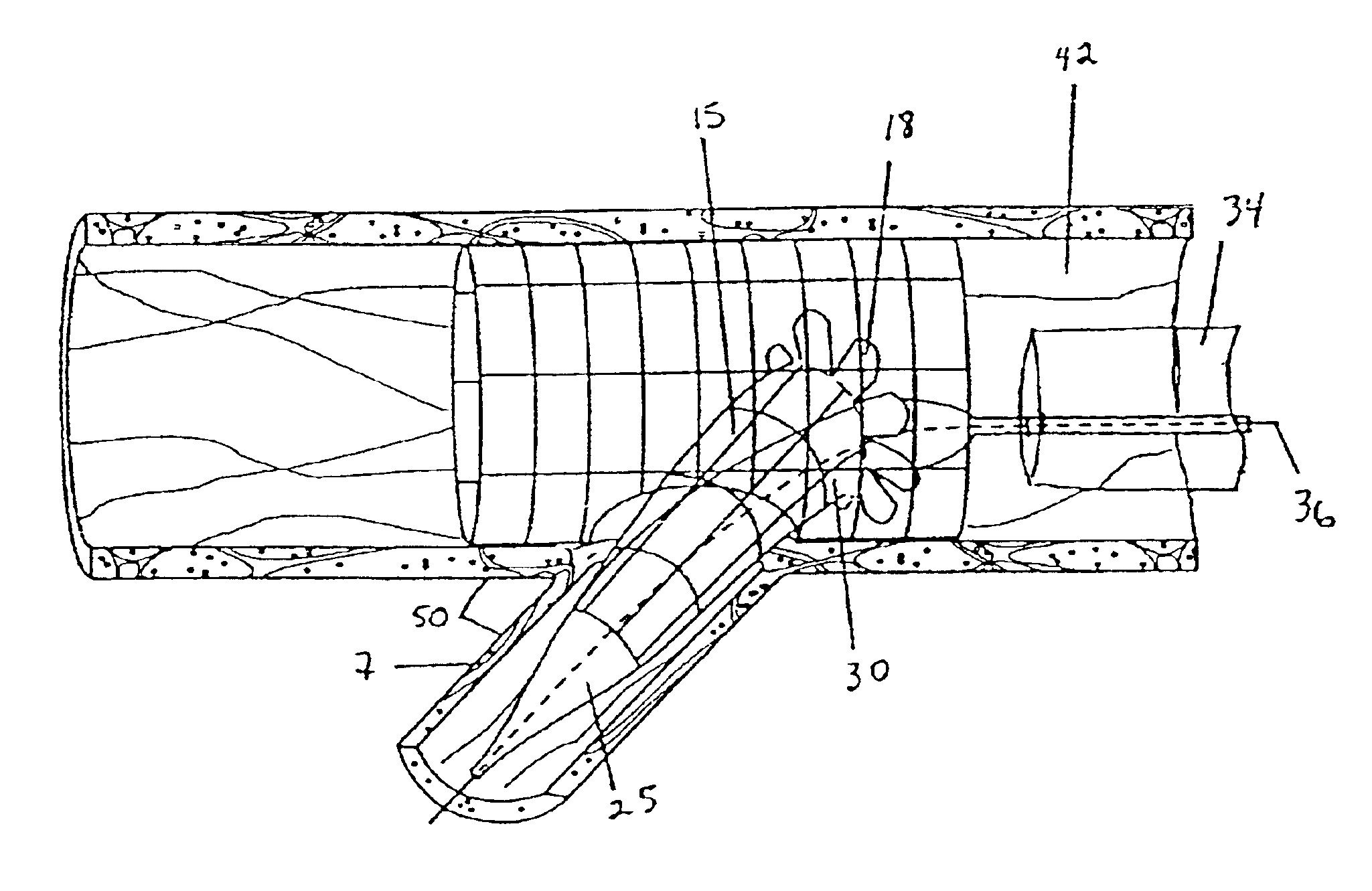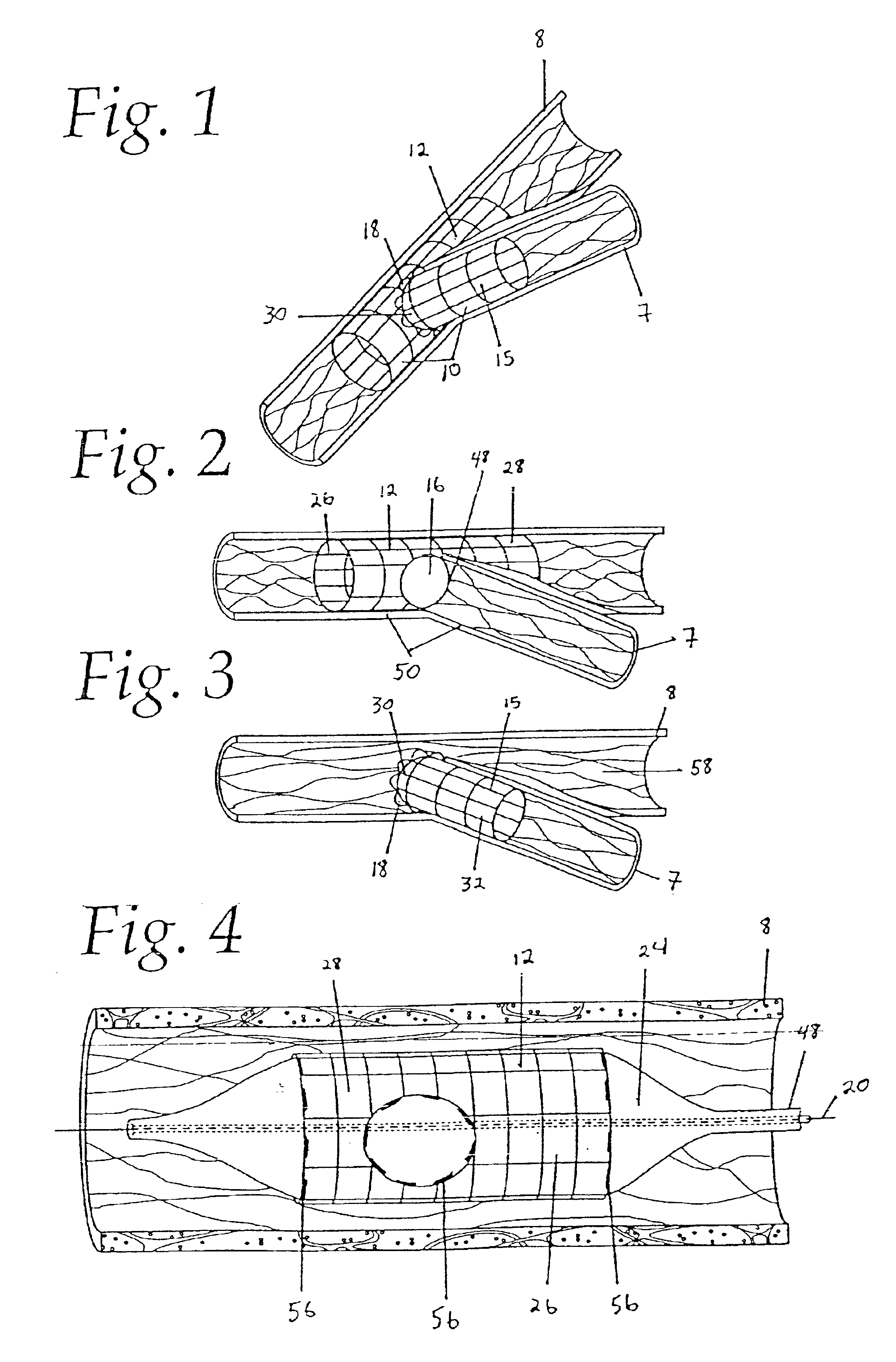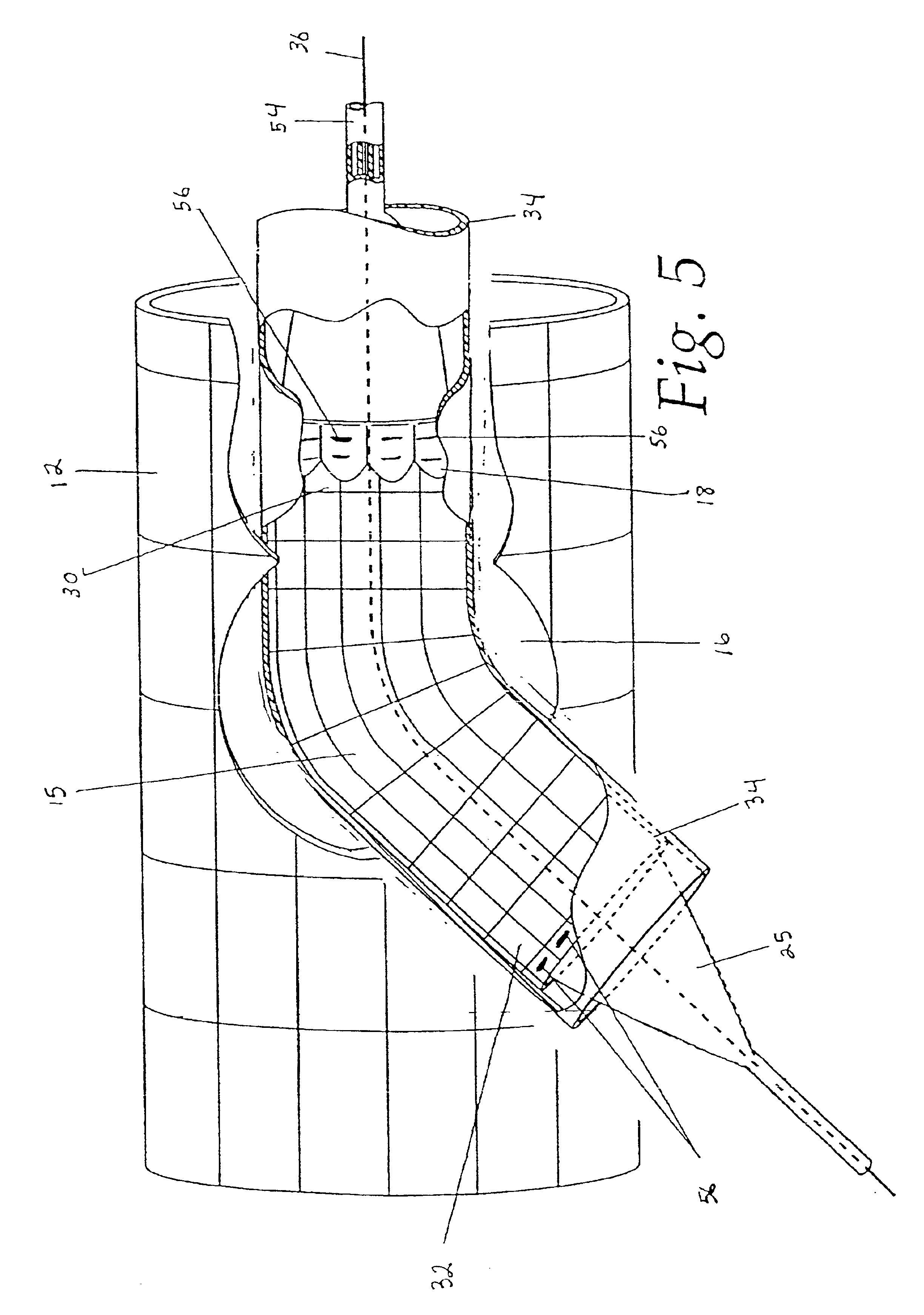Method for employing an extendible stent apparatus
- Summary
- Abstract
- Description
- Claims
- Application Information
AI Technical Summary
Benefits of technology
Problems solved by technology
Method used
Image
Examples
Embodiment Construction
[0037]The bifurcating double-stent apparatus 10 of the present invention comprises a generally cylindrical main stent 12 and a generally cylindrical flared stent 15, which are shown as fully dilated in a subject main vessel 8 and a subject branch vessel 7, as illustrated in FIG. 1.
[0038]The main stent 12 contains at least one generally circular opening 16 located between the proximal end 26 and the distal end 28 of the main stent 12 (FIG. 2), which opening is positioned over the opening 48 of a branch vessel in a vessel bifurcation 50, as shown in FIG. 2. The ends of the stent 12 and the opening are imaged during imaging procedures by placing markers 56 around the edges of the opening 16 in the main stent 12 and at the proximal end 26 and distal end 28 of the main stent, as illustrated in FIG. 4.
[0039]The flared stent apparatus 15 of the present invention comprises a generally cylindrical flared stent comprising a proximal end 30 and a distal end 32, as shown in FIG. 3. The proximal...
PUM
 Login to View More
Login to View More Abstract
Description
Claims
Application Information
 Login to View More
Login to View More - R&D
- Intellectual Property
- Life Sciences
- Materials
- Tech Scout
- Unparalleled Data Quality
- Higher Quality Content
- 60% Fewer Hallucinations
Browse by: Latest US Patents, China's latest patents, Technical Efficacy Thesaurus, Application Domain, Technology Topic, Popular Technical Reports.
© 2025 PatSnap. All rights reserved.Legal|Privacy policy|Modern Slavery Act Transparency Statement|Sitemap|About US| Contact US: help@patsnap.com



